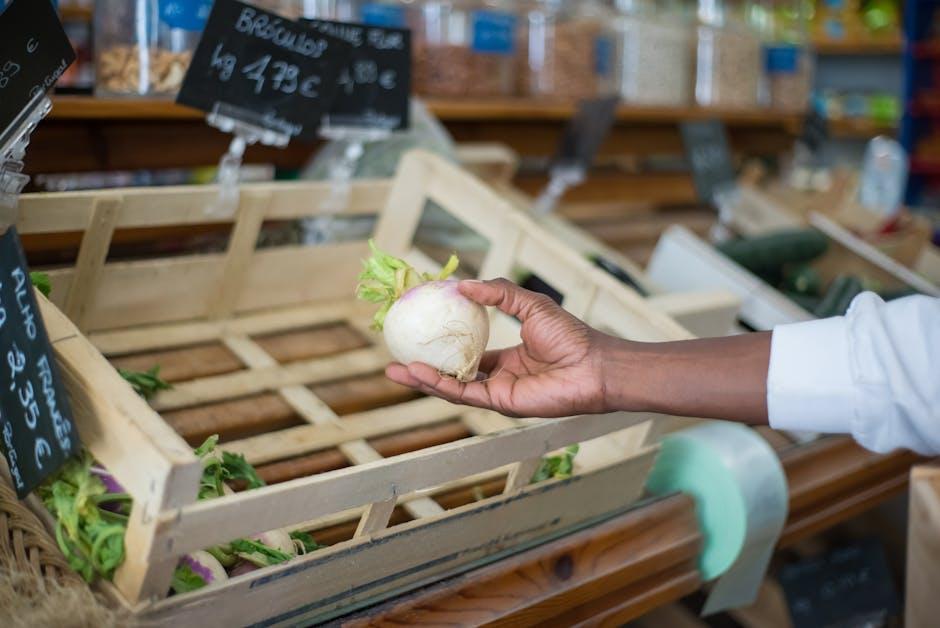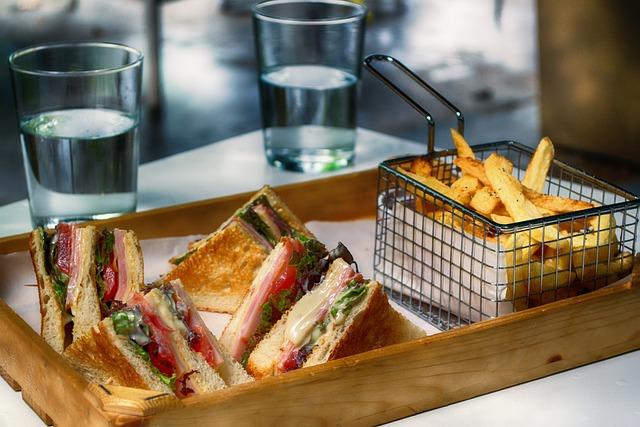In a world where convenience often trumps conscience, fast-food chains have long been the poster children of our grab-and-go culture. Burgers wrapped in shiny paper, fries nestled in crisp cartons, and drinks served in sturdy plastic cups have become ubiquitous symbols of a quick meal on the run. Yet, as our awareness of environmental challenges deepens, these familiar packaging choices are increasingly coming under scrutiny. The question now echoing across boardrooms and bustling kitchens alike is whether it’s time for fast-food giants to swap their traditional packaging for biodegradable alternatives. This shift could herald a new chapter in sustainable dining, but it also raises a host of practical and economic considerations. As we delve into the heart of this debate, we explore the potential benefits, challenges, and implications of a greener approach to packaging in the fast-food industry.
Environmental Impact of Fast-Food Packaging
The fast-food industry is notorious for its contribution to the mounting waste crisis, primarily through the use of non-biodegradable packaging. Traditional packaging materials, such as plastics and polystyrene, persist in the environment for hundreds of years, leading to significant ecological harm. These materials often end up in landfills, oceans, and natural habitats, posing threats to wildlife and contributing to pollution. By switching to biodegradable alternatives, fast-food chains have the potential to dramatically reduce their environmental footprint.
- Reduced Waste: Biodegradable packaging breaks down naturally, decreasing the volume of waste in landfills and oceans.
- Lower Carbon Emissions: The production of biodegradable materials often results in fewer carbon emissions compared to traditional plastics.
- Protection of Wildlife: With less plastic pollution, the risk to marine and terrestrial animals diminishes significantly.
Embracing biodegradable options not only aligns with a growing consumer demand for sustainable practices but also positions fast-food chains as leaders in environmental responsibility. The transition, while challenging, offers an opportunity to innovate and redefine industry standards for the betterment of our planet.
Biodegradable Alternatives: An Eco-Friendly Solution
In the pursuit of a greener planet, fast-food chains are exploring biodegradable packaging as a compelling alternative to conventional materials. The shift towards eco-friendly solutions is not only a response to increasing environmental concerns but also a strategic move to align with the growing demand for sustainable practices among consumers. Biodegradable packaging, derived from natural substances such as cornstarch, sugarcane, and bamboo, offers a promising avenue to reduce the immense waste generated by single-use plastics.
- Environmental Impact: Biodegradable materials break down more quickly and safely, reducing the burden on landfills and decreasing pollution in oceans and other natural habitats.
- Brand Image: Companies adopting sustainable packaging can enhance their brand image, attracting eco-conscious customers and setting a standard in the industry.
- Regulatory Compliance: With increasing regulations on plastic use, biodegradable options can help businesses stay ahead of legal requirements and avoid potential fines.
As the food industry continues to evolve, the integration of biodegradable alternatives is not just a trend, but a necessary step towards a sustainable future.

Economic Implications for Fast-Food Chains
Transitioning to biodegradable packaging presents both challenges and opportunities for fast-food chains. On the economic front, the initial investment in sustainable materials may lead to increased operational costs. Biodegradable packaging often comes with a higher price tag compared to traditional options, potentially impacting profit margins. However, the long-term benefits could outweigh these upfront costs. By adopting environmentally-friendly practices, fast-food chains might attract a growing demographic of eco-conscious consumers, enhancing brand loyalty and increasing market share.
Furthermore, government incentives for sustainable practices could provide financial relief, offsetting some of the expenses associated with the switch. Chains may also experience savings through reduced waste management costs, as biodegradable materials are easier to process and recycle. In addition, aligning with global sustainability trends can enhance a brand’s reputation, making it more appealing to investors and partners. Fast-food chains that seize this opportunity to innovate and adapt might not only contribute positively to the environment but also position themselves favorably in a competitive market landscape.

Consumer Preferences and Sustainability Trends
As environmental awareness gains momentum, consumers are increasingly favoring businesses that prioritize sustainability. This shift in consumer preferences is prompting fast-food chains to rethink their packaging strategies. Biodegradable packaging offers a promising solution to reduce the environmental impact of single-use plastics. Not only does it decompose more quickly than traditional packaging, but it also aligns with the growing demand for eco-friendly practices. Fast-food giants are now under pressure to adopt these sustainable alternatives, as customers actively seek out brands that demonstrate a commitment to preserving the planet.
The benefits of transitioning to biodegradable packaging are manifold. Consider the following advantages:
- Reduced Waste: Biodegradable materials break down naturally, minimizing landfill contributions.
- Improved Brand Image: Companies can enhance their reputation by adopting environmentally friendly practices.
- Consumer Appeal: Eco-conscious customers are more likely to support brands that share their values.
- Regulatory Compliance: Staying ahead of potential legislation that mandates sustainable packaging solutions.
As the sustainability trend continues to influence purchasing decisions, fast-food chains must evaluate the long-term benefits of switching to biodegradable packaging to remain competitive in a rapidly evolving market.
Final Thoughts
As we stand at the crossroads of convenience and sustainability, the question of whether fast-food chains should switch to biodegradable packaging invites both reflection and action. It’s a dialogue that involves not just the companies, but consumers, policymakers, and environmental advocates alike. Each burger wrapper or cup that finds its way into the ecosystem tells a part of the story—one that we collectively author with every choice we make.
While the shift towards biodegradable packaging is fraught with complexities, it also offers an opportunity to redefine what fast food can mean in a rapidly changing world. The decision doesn’t just impact the environment; it reshapes industry standards and consumer expectations. As we chew on the possibilities, the challenge remains to balance practicality with progress.
Ultimately, whether fast-food chains embrace this change could set the tone for a new era of mindful consumption, one where the value of our planet is not an afterthought but a priority. The future is not yet written, and in the grand theater of fast food, each player has a role in shaping the narrative. Will the industry take the leap into a greener tomorrow, or will it remain wrapped in the familiar comforts of today? Only time will tell.




